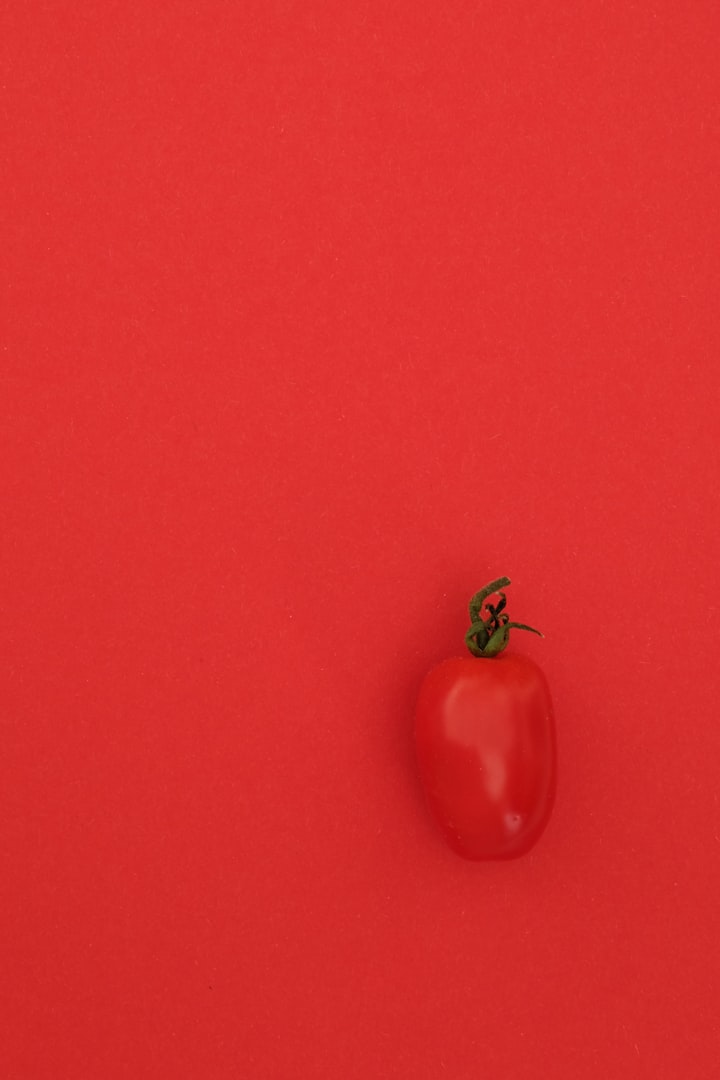The US Was Terrified of Tomatoes
How tomatoes went from feared to revered

People might love a pasta sauce, but they may hate the actual tomato. Historically, this is an echo of, at least in the US, our huge, weird relationship with tomatoes. It’s crazy that people don’t talk about it more often. I mean, I don’t know if anybody else had this misconception, but when I was quite young, I just kind of assumed tomatoes were Italian because I associated them with pasta sauce, but they’re not. They’re Mesoamerican. We have proof that the tomato was eaten in the Aztec culture as early as 700 AD.
It wasn’t until nearly 1600 that they began to grow tomatoes in Britain. And in the early 16th century, the Spanish that was coming back from expeditions to Mesoamerica had seen this fruit for the first time. It’s really funny too because it wasn’t even considered a foodstuff, it was grown exclusively for aesthetic and ornamental purposes. John Parkinson, who was the apothecary to King James I, and was also a botanist for King Charles I, referred to tomatoes as love apples. He proclaimed that the love apples were eaten by people in hot countries to cool and quench the heat and thirst of their hot stomachs but Brits only grew them as a novelty.
Fruit, vegetable, or poison?
You can find a couple of recipes but one of the earliest European references to the tomato as food was made by an Italian herbalist named Pietro Andrea Mittal, who referred to it as a golden apple. People were comparing tomatoes to the closest visual analog they had which was the apple. Pietro made a huge misstep that would have consequences and ripple effects for centuries to come. He classified the tomato as a kind of nightshade or Mandrake. When Pietro classified the tomato as a Mandrake, he committed a character assassination. He made the tomato seem super sketchy like it was poisonous, and after this, the fruit was also somehow associated with temptation.
People thought tomatoes were dirty, especially fancy people in Europe because even though Spanish cooks from the 15th century started adopting it after they saw it used in Mesoamerica, Italians didn’t pick it up immediately especially the aristocrats, because tomatoes hung low to the ground. British people knew that people in Spain and Italy who had bit the tomato and tried it out weren’t dying. Still, there were a lot of rumors. In fact, in the late 1700s, a ton of Europeans feared the tomato and gave it a third apple nickname. First, we said golden apple, then love apple, it was now called the poison apple.
Oh, the poison apple. This nickname was somewhat connected to this fear of it being unclean. The tomato continued to be feared across Europe because of that very nickname. There was also this notion that there was a spate of sickness around eating tomatoes that struck the aristocratic class, that many of them fell ill and died after eating the dreaded poison apples. But it had nothing to do with the fruit at all, it had to do with the flatware.
These fancy Europeans were using pewter plates, which were super high in lead content. Tomatoes are so high in acid, that when they were placed on to this particular type of material, the fruit would suck up lead content from the plate into the actual fruit itself, also because of the very porous nature of the tomato. So that was death due to lead poisoning. There was a conduit with the tomato, but it wasn’t the tomato itself that was causing people to get sick. So you know, it was an easy kind of fall guy — better yet, fall fruit.
But of course, now if you go into any major European city, it will be strange to not see a tomato, right? They are super popular. Why is that? Well, it all comes down to the creation of a culinary superhero, the pizza. When pizza hit the scene, the tomato wrote its coattails to widespread popularity.
Tomatoes were thriving across the pond once the pizza revolution began. But let’s go back to North and South America. The first reference to the tomato in the British North American Colonies was published in herbalist William Salmon’s Botanologia printed in 1710. And it places the tomato in the Carolinas, the tomato was thought of as regional foodstuff but the US wasn’t super united. The word of the tomato would spread to places where it wasn’t common. But those myths about it would also spread. A lot of people knew how to grow tomatoes, but they didn’t know what to do with them once they were grown because they thought it was poisonous.
There was this really weird incident that many people haven’t heard of where, in addition to thinking tomatoes were poisonous, there was a massive outbreak of hysteria about the danger of what was called the green tomato worm. The dreaded green tomato worm means us harm, at least according to a Dr. Fuller in New York City, who was quoted in the Syracuse Standard as saying he found a five-inch tomato worm in his garden captured it in a bottle, and did some tests I would assume because he described it as being poisonous as a rattlesnake. Moreover, it would throw spittle at its prey. Once your skin would come in contact with this spill, it would swell up immediately. Then the victim would seize up and die.
People had these pretty rigid ideas about the ‘right color of food’ and according to Andrew F Smith, the author of The Tomato in America, Early History, Culture, and Cookery, red was not considered the right color for any kind of food. And people grew them because it was a striking, cool color, but they grew them the way you would grow flowers. They weren’t planning to eat them most of the time until 1834.

Redemption or not?
A man named Dr. John Cook Bennett, who was a physician and an amateur botanist, went public with his claim that tomatoes had medicinal properties. He said that he had visited European hospitals and colleges and seen doctors recommending eating tomatoes to patients. He claimed they could prevent cholera, treat diarrhea, and help with headaches and dyspepsia. People loved this good news, people are always interested in health news. The problem is Dr. Bennett is what we would candidly describe as a quack.
It does turn out that there are some health benefits to tomatoes. They’re high in certain vitamins and I think lycopene is very important. New studies are going into tomato-based remedies. Tomatoes can also help prevent certain types of cancer. Eating tomatoes is not going to kill you.
Still, Bennett took it too far. He was one of those folks from the wild age of medical expertise. Bennett earned a medical degree in 1825 but he also started selling medical degrees for $10. So he’s not the most trustworthy sort. He became a tomato evangelist, circulating a transcript of his lecture on how great tomatoes were across Ohio, where he resided throughout the United States. And he also wasn’t the first, he was a heck of a plagiarist. There was another physician Thomas Sewell, who gave a lecture in 1825 about Virginia farmers growing tomatoes, and the writer Horatio Gates Spafford also wrote about how great tomato was in 1831.
Bennett sort of marketed it as a remedy. But then it became a condiment too, and later, it was also a sauce. Then he hired someone to make it into a pill. In 1837, he would put forth even these recipes where he was saying that you could fry them up with butter, or eat them raw or whatever.
Tomato Wars
This is where Bennett’s motivations come into play. He targetted another con artist named Archibald Miles, which is definitely like a sleazy con artist name in a place like Oklahoma, and asked him to be the face of these tomato pills. Miles claimed that his pills had been scientifically tested and developed through years of research and development to treat everything from a stomach ache to STDs like syphilis. None of this is true, by the way, but people loved it, they saw the ads and they want to buy them. And then someone else, a man named Dr. Phelps, who was a physician who did go to Yale started selling his own version. He called them compound tomato pills and he promised the same largely bullcrap results.
Miles lost his mind and the tomato pill war began, that’s the best thing to call it. There’s an anonymous diatribe that was released in a New York paper which denounced Phelps’s pills, saying they were a baseless imitation. You know all true medical minds know that the only real tomato pill is made by Dr. Miles.
It’s no wonder we need the FDA so desperately which didn’t come around until 1906. So it was absolutely the “Wild West” of these kinds of bold claims. And it was a war of marketing. Sure, there’s probably some medicinal value to tomatoes in the same way, like taking a vitamin supplement might, you know, give you some beneficial results but it’s certainly not going to cure all that ails you.
Miles didn’t appreciate some of these little kinds of startups that were coming and trying to eat his lunch. And so he had an editorial sent into the New York Journal of Commerce behind the scenes and wrote basically, that claim that Phelps was an absolute quack and a charlatan and not to be trusted. And then Phelps countered in this PR war, saying that Miles had about as much claim to the title of doctor as his horse, and essentially accused him of stealing his brilliant tomato pill formula.
Of course, Miles continues the war. He issues endorsements purporting to be from other people that say his pills are the original, and all other tomato pills are frauds. For two years, the reading public of the United States and surely the newspaper editors loved this. They were doing the opposite of what you’re supposed to do with journalism. They were publishing increasingly fanciful crazy claims about the power of the one true tomato pill, whichever it may be, but that’s when the news broke and people learned that neither of these pills contained any tomatoes.
The answer is that the battle ended seemingly out of the blue in 1839. We still don’t know what happened. But behind the scenes, historians think that Phelps and Myles either came to an agreement, or they realized that the jig was up. Tomato pills were still sold. But the national advertising campaigns ended in spring for Phelps, and in summer for Miles.
Miles went on to become a real estate investor, although he still described himself as a physician. Phelps founded a life insurance company in Connecticut, and continued selling his pills but without national networking writer infrastructure into the early 1850s. Although the buzz about tomato pills started to die down, the tomato was now solidified in the Zeitgeist of the US.
******** **************** **********************
Like what you read? Send me a gift below to help contribute to my next adventure!
You can also sign up for my mailing list here: https://bit.ly/3el7KKa
About the Creator
Blessing Akpan
I am a photographer of thoughts, let me capture your soul.






Comments
There are no comments for this story
Be the first to respond and start the conversation.